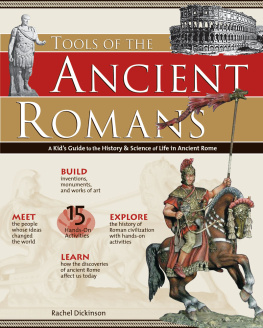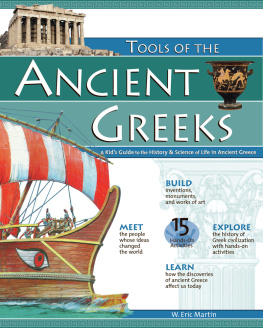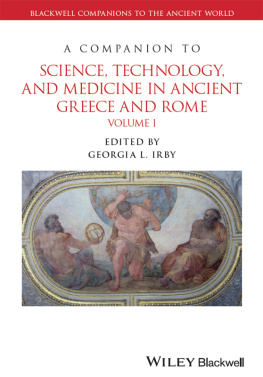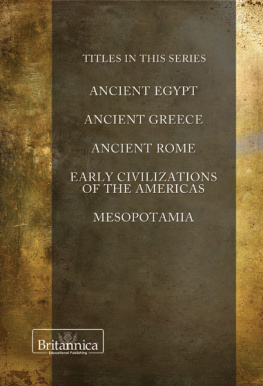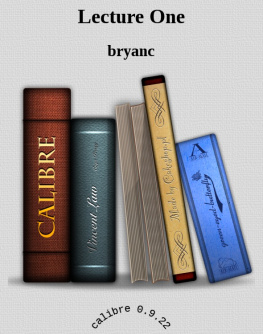CONTENTS
on the spelling of Greek names and terms
on references to ancient works
, by Mary Jo Nye
: Genres of scientific communication
: Scientific poetry and the limits of myth
: Scientific and mythic explanation in dialogue
about Ancient Books
A NOTE ON THE SPELLING OF GREEK NAMES AND TERMS
For the most part (but not always), I have adopted a latinized spelling of Greek names and terms (for example, Eudoxus, rather than Eudoxos; Callippus, rather than Kallippos), to conform to general usage. Following The Chicago Manual of Style (15th edition), I have normally transliterated the Greek upsilon () as u, but in some cases (for example, mythos) as y. The Greek chi () is transliterated as kh (as in skholai).
A NOTE ON REFERENCES TO ANCIENT WORKS
References here to Platos Timaeus and Plutarchs dialogue On theFace on the Moon cite Stephanus pages. This convention offers readers a uniform system of reference, regardless of which edition or translation they use, by providing in the margins of modern editions the page references to the edition of Plutarchs Moralia published in 1572 and of Platos writings in 1578 by Henri Estienne (c. 1528/31-1598). These editions were, for more than two centuries, the standard. The name Stephanus comes from the latinized form of Estienne. References to Strabos Geography indicate their place in the 1620 edition of Isaac Casaubon.
ABBREVIATIONS
c.
circa (as in circa 586 BCE).
Complete Works
The Complete Works of Aristotle, ed. J. Barnes, 2 vols, Princeton: Princeton University Press, 1984, Bollingen Series 71.2.
DK
Diels, H. and Kranz, W. (eds) Fragmente der Vorsokratiker, 6th edn, 3 vols, Berlin: Weidmann, 1952.
KRS
Kirk, G.S., Raven, J.E. and Schofield, M. The Presocratic Philosophers, 2nd edn, Cambridge: Cambridge University Press, 1983.
LCL
Loeb Classical Library, London: Heinemann and Cambridge, Mass.: Harvard University Press.
LSJ
Liddell, H.G., Scott, R. and Jones, H.S. A Greek-English Lexicon, 9th edn, Oxford: Clarendon Press, 1940 with a supplement, 1968.
Acknowledgments
It is a very pleasant duty to acknowledge those who have contributed to the writing of this book. The essays presented here were given as public lectures when I had the pleasure of being a Horning Visiting Scholar at Oregon State University in April 2007. Prior to that, I benefited from testing out my ideas on participants on a number of occasions: a Pudding Seminar at Newnham College in 2002, a seminar on dialogue presented at the Karman Institute for Advanced Studies in the Humanities at the University of Bern in 2006, and workshops on ancient scientific texts held at Newnham College in 2006 and University College Dublin in 2007. I am grateful to the Part II students in the Department of History and Philosophy of Science who, during the autumn of 2007, read and discussed Plutarchs dialogue with me. I especially thank the audiences at my lectures in Corvallis for their helpful questions and insights.
I thank the following individuals for reading portions of the text, and offering useful suggestions and criticisms: Aude Doody, Ian Du Quesnay, Nick Jardine, Philip Hardie, Geoffrey Lloyd, Christine Salazar, David Sider, Laurence Totelin, Philip van der Eijk and Frances Willmoth. David Konstan not only read my text, offering helpful suggestions, but also generously shared his own work with me prior to publication, as did David Sedley. In addition to providing welcome suggestions for my text, Harry Hine very kindly shared his own translation of Aetna. Others deserve thanks for providing special help in various ways: Janet Dudley, Marina Frasca-Spada, Ruth Horry, Tamara Hug, Natalie Kaoukji, Diana Lipton, Peter Lipton, Helen MacDonald, Joshua Nall, Maria Louise Nava, Margaret Olszewski, Torben Rees, and Jill Whitelock.
Numerous colleagues and friends provided encouragement and enthusiasm, discussing my work with me at various points, for which I am grateful. Without naming all of them, I should particularly mention: Jochen Althoff, Sabine Fllinger, Andreas Grser, Gerd Grahoff, Martin Kusch, Sachiko Kusukawa, Diana Lipton, Glenn Most, Ineke Sluiter, Michael Sharp and Michael Worton. A special note of thanks is due to Paul Cartledge for reading page proofs. Niall Caldwell discussed and read this work at several stages andyet againcontributed in ways too numerous to list here.
I warmly thank Mary Elizabeth Braun and Jo Alexander at Oregon State University Press for all of their help. Finally, I thank Mary Jo Nye and Robert Nye, Thomas Hart and Mary Jones Horning Professors in the Humanities, for inviting me to give these lectures, and the series editors, Mary Jo Nye and Paul Farber, for all of their encouragement and helpful advice in producing this volume.
I dedicate this work, with gratitude, to my teachers.
-LIBA TAUB
Foreword
The Thomas Hart and Mary Jones Horning Endowment in the Humanities at Oregon State University was established by a bequest from Benjamin Horning (1890-1991) in memory of his parents, Mary Jones and Thomas Hart Horning, who were members of pioneering families of Benton County and Corvallis, Oregon. Benjamin Horning was a 1914 alumnus of OSU who completed a medical degree at Harvard University and a degree in public health at the Johns Hopkins University. His professional career included service in public health in Connecticut, as well as a position as medical director for the W. K. Kellogg Foundation. Dr. Horning wanted his bequest at Oregon State University to expand education in the humanities and to build a bridge between the arts and the sciences.
The first Thomas Hart and Mary Jones Horning Professors in the Humanities, Mary Jo Nye and Robert A. Nye, were selected in 1994, with academic appointments in the Department of History, chaired by Paul Farber. Since then, the endowment has supported an annual lecture series, individual lectures, conferences, symposia, and col oquia, as well as teaching, research, and program and collections development. The Thomas Hart and Mary Jones Horning Visiting Scholar in the Humanities program was inaugurated in 2006 when Ken Alder, Professor of History and Milton H. Wilson Professor in the Humanities at Northwestern University, spent a weeks residence on campus and presented a lecture and col oquium, while also meeting with faculty and students.
Each of the volumes in the OSU Press Horning Visiting Scholars Publication Series, under the direction of the Presss Acquisitions Editor, Mary Elizabeth Braun, is the product of a series of three public lectures given by a Horning Visiting Scholar during a one-week residence on the OSU campus. This first volume of essays was written by Liba Taub, Director and Curator of the Whipple Museum of the History of Science, Reader in History and Philosophy of Science, and a Fellow of Newnham College at the University of Cambridge. The original public lectures that form the core of Aetna and the Moon: Explaining Nature in AncientGreece and Rome were given during April 10-13, 2007.
Liba Taubs research and scholarship focus on the history of scientific instruments and the history of early science, particularly ancient Greek and Roman astronomy, physics, and meteorology. Her earlier publications include Ptolemys Universe: The NaturalPhilosophical and Ethical Foundations of Ptolemys Astronomy (1993) and Ancient Meteorology (2003). She is the editor, with Frances Willmoth, of The Whipple Museum of the History ofScience: Instruments and Interpretations, to Celebrate the SixtiethAnniversary of R. S. Whipples Gift to the University of Cambridge
Next page
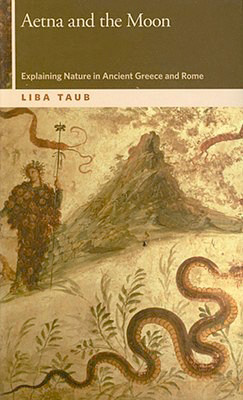

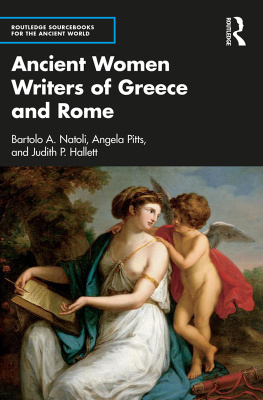

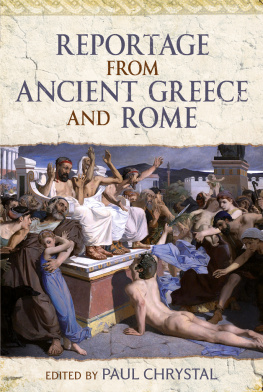
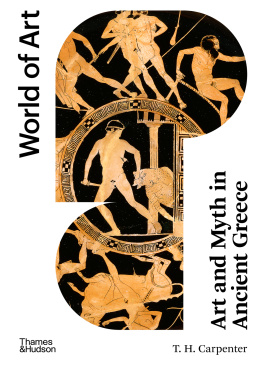
![Michael Lovano - The World of Ancient Greece: A Daily Life Encyclopedia [2 Volumes]](/uploads/posts/book/268736/thumbs/michael-lovano-the-world-of-ancient-greece-a.jpg)
